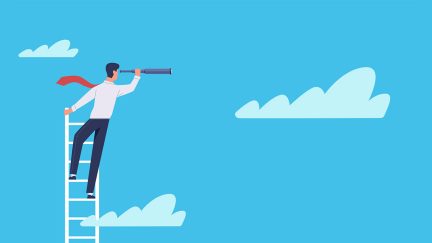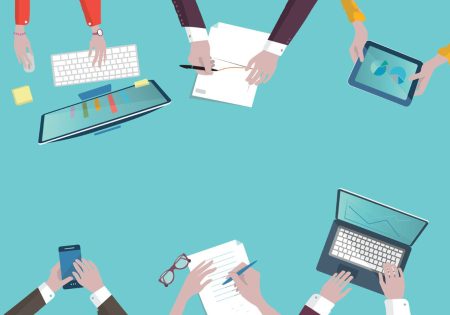Never miss a story — sign up for PLANADVISER newsletters to keep up on the latest retirement plan adviser news.
Economic Murkiness Won’t Soon Dissipate
One economist says there is so much noise in the data that it’s hard to assess where we are right now, let alone where things are going from a macroeconomic perspective.
During a 2020 mid-year market update webcast hosted by Capital Group, Darrell Spence, a lead economist with the firm, said his job has been even more difficult than it usually is during this time of the coronavirus pandemic.
It’s never easy to forecast where the U.S. and global economy may be moving, Spence said, let alone to take such projections and craft assumptions about the future behavior of the equity and bond markets. But, by relying on data and past experience, it is normally possible to create some confidence about where the big picture is heading.
“The current situation is unprecedented in our lifetimes and that is a real challenge for economists,” Spence said. “Clearly, we are starting to see signs of recovery, but there is a limit to what we can take away from the extraordinary data points we are getting, from March’s unprecedented drop in retail sales to the unprecedented jump we have seen recently. There is just so much happening and there’s no real context for drawing past comparisons.”
As Spence explained, the drivers of the current economic turmoil do not at all resemble the systemic excesses and imbalances that underpinned both the Great Depression and the Great Recession.
“This downturn, this recession were not caused by excesses or issues in the financial system itself,” Spence observed. “Rather, even very healthy businesses were forced to shut down and the economy fell off a cliff because of that. Right now the data is still really unusual and it is more of a Rorschach test. You can read whatever you want into the numbers that we are seeing.”
Spence’s own view right now is that the U.S. is entering a “U-shaped” recovery, meaning that recovery will be fairly gradual but that it will follow a steady upward slope. He compared this prospect with a “W-shaped” recovery, also known as a “double dip recession,” suggesting that outcome is probably less likely.
“I think a second round of lockdowns is unlikely because of the fact that people won’t accept another lockdown and the fact that we are now starting to have some optimism about effective therapeutics,” Spence suggested. “I also say this because, with all the fiscal stimulus and unemployment benefits being paid out, consumers in aggregate are actually earning more and their savings rate has skyrocketed. So consumers may return to spending pretty quickly.”
On the same day as the Capital Group webcast, Brad McMillan, chief investment officer for Commonwealth Financial Network, published his own mid-year market update. Like Spence, McMillan points to the difficulty in making any sort of predictions about the short-term financial future.
“At about the halfway point of 2020, we’ve already had enough news (and then some) to fill up the entirety of an average year,” McMillan says. “So far, we’ve seen a pandemic explode—and then moderate. The stock market crashed—and then recovered rapidly. There were riots around the nation—and we don’t yet know what comes next there.”
In addition to all these major events, McMillan observes, the political environment has become steadily more confrontational, and “that will likely get worse as we move toward the November elections.”
“In an environment where so much is happening at once, it’s hard to reasonably predict what might happen in the second half of the year,” McMillan warns. “There is a lot we do not know, and outcomes remain very uncertain. At the same time, we do know enough to make some broad educated guesses as to the likely course of events and, just as important, to identify the most critical components of those guesses. Right now, this approach is the best one we can take.”
On McMillan’s analysis, there are signs that the second quarter may be the bottom and that the depression of the second quarter will give way to renewed growth.
“The first sign is the speed and magnitude of the governmental response to the crisis,” he says. “Of course, the decision to impose a shutdown across the country put the economy into an induced coma. But the government also provided life support in the form of trillions of dollars in payments to workers and businesses. Personal income actually rose in response. Plus, although spending dropped, the high savings rate gives consumers the power to spend as the recovery continues.”
The second sign is the success, thus far, of the reopening of the economy.
“Despite the shutdown and layoffs in March and April, jobs started to recover in May,” McMillan says. “This increase is a clear indication that we are past the worst of the job losses and that the recovery is likely to remain strong. Workers can now spend, if they feel confident to do so. Indeed, surveys of consumer confidence have shown that it has bottomed and started to bounce. What happens in the second half of 2020 will depend on how quickly that recovery continues.”
To figure that out, McMillan points to “the four key elements of the economy,” which are consumer spending, business investment, net exports and government spending. Very broadly speaking, the signs appear positive on the first three items, and McMillan says government spending is the “wild card.”
“In the second half of the year, as the economy recovers, additional stimulus is likely to be much less—but not zero,” he proposes. “Low interest rates will remain effective, expanded unemployment insurance will be in place in July and another stimulus program is under discussion for later in the summer. This federal-level stimulus, however, will likely be offset by cuts in government spending at the state and municipal levels. Net stimulus, therefore, is likely to be close to even, leaving government spending as a neutral factor through the end of the year.”
On the whole, McMillan says, the rest of the year looks likely to be a slow healing process.
“The second quarter will be terrible, with a hit to both consumer spending and business investment, partially offset by government stimulus,” he concludes. “The third quarter will likely show some recovery, offset by reduced stimulus. And, hopefully, the fourth quarter will see an economy that has recovered back to levels close to the start of the year, as federal stimulus measures wind down to zero while state and municipal spending moves back to normalized levels. If the virus remains under control (again, our base case) and the economic recovery continues at the rate we have seen, a recovery to January 2020 levels by the end of 2020 looks quite possible.”
You Might Also Like:

Crossmark’s Doll Projects Long-Predicted Recession to Materialize in 2024

Doll Scores 50/50 on 2023 Predictions

In Face of Volatility, Diversity Rules in Retirement Plan Menus
« Excessive Recordkeeping Fees Cited in Oshkosh ERISA Challenge